Ugly duckling
Boris Kožuh
Surely you know Andersen’s fairy tale about the ugly duckling. But did you know that this is not only a story but also a truth? The story of the ugly duckling began in December 2019 at airfield Ptuj in Slovenia. The abandoned Chavka (Jackdaw) glider waited fifty-three years under the roof of the hangar. Forgotten for decades, it collected dust and all dirt from mice and birds. Finally, saw it the pilot and journalist Nikolai Slana, who eagerly published several articles about vintage gliders on his glider blog (Opensoaring.com). As a member of our team, he immediately thought: “I have to tell my friends about this ugly duckling.”
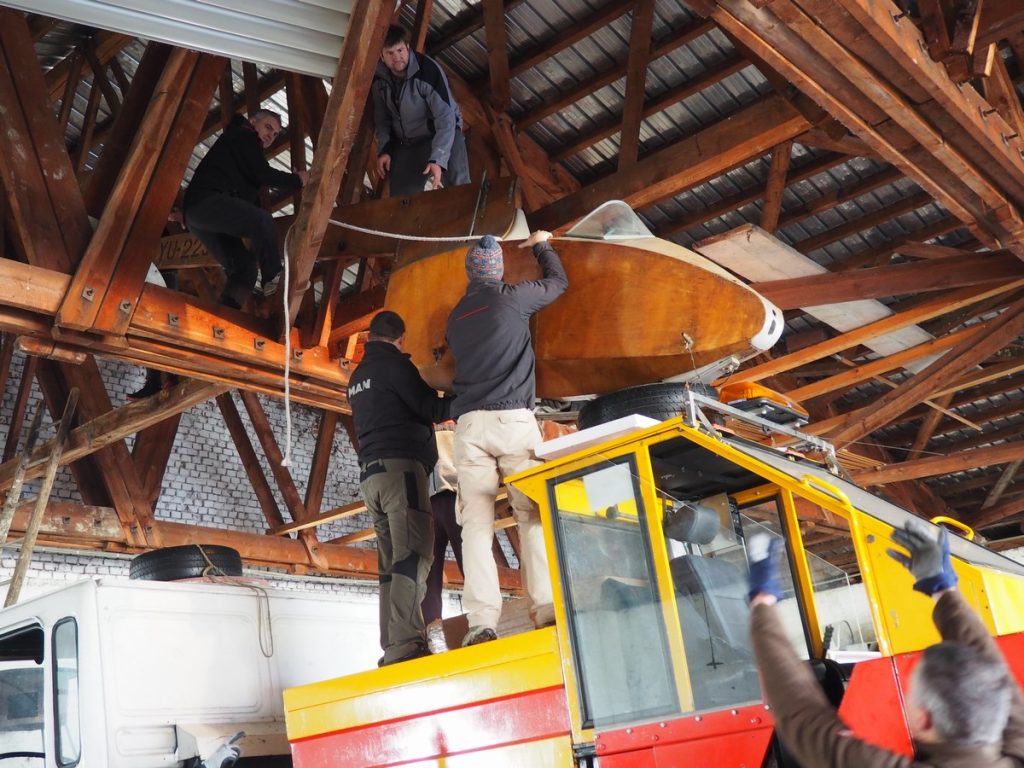
His story found a fertile soil and two weeks before the New Year 2020 we went to the city of Ptuj to see the duckling. We took Chavka from the attic. When one of the club pilots was sweeping the dust off the wings in the meadow in front of the hangar, we all ran away as if a bomb had exploded.
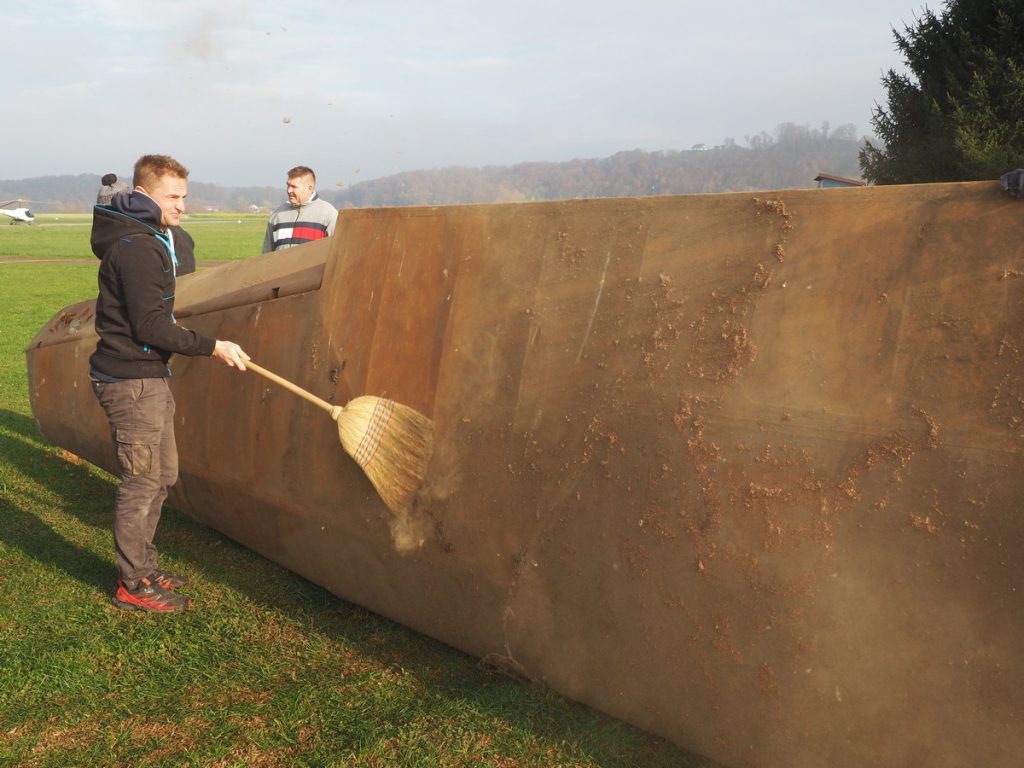
Finally, a very interesting glider emerged from the dust cloud, which at first glance could take off in a moment. Immediately after the New Year Eve, on January 17, we went on a journey with Čavka from Slovenia to the city of Kutna Hora in the Czech Republic. There it turned out that the glider was very well preserved and almost undamaged.

Each of us was inflamed by different thoughts and fantasies. Nikolai was primarily interested in what would happen next, Klemen was crazy about everything that was produced in the Letov factory (Ljubljana, Slovenia), and Boris first thought: “what if I sit in Čavka and Nikolaj pulls me into the air by car?”. It was like having our heads in the clouds thinking about flying through the clouds. This gave us enough starting energy. Physicists mistakenly argue that energy cannot be created from nothing. It turned out that it can be. Six months ago, we hadn’t even thought about a Čavka, and suddenly the energy was spreading over all the edges.
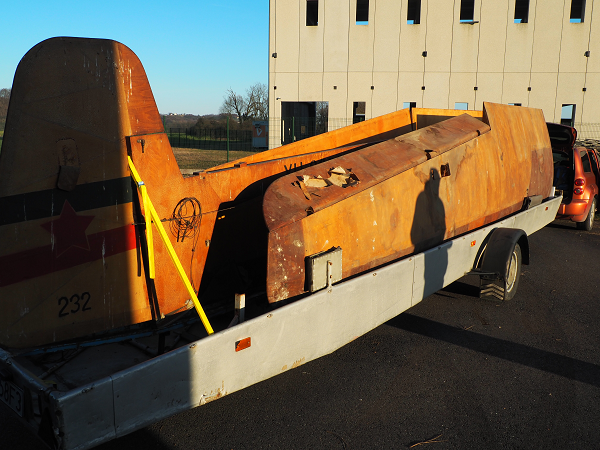
We went with Čavka to our teacher Jiři Leník in the Czech Republic. In the town of Kutna Hora there is a factory of modern HpH gliders, producing Shark gliders. The owner of the factory, Jaroslav Potměšil, offered Jiři a large workshop a few years ago, where Jiři does what he loves the most besides flying: he builds and repairs wooden gliders.
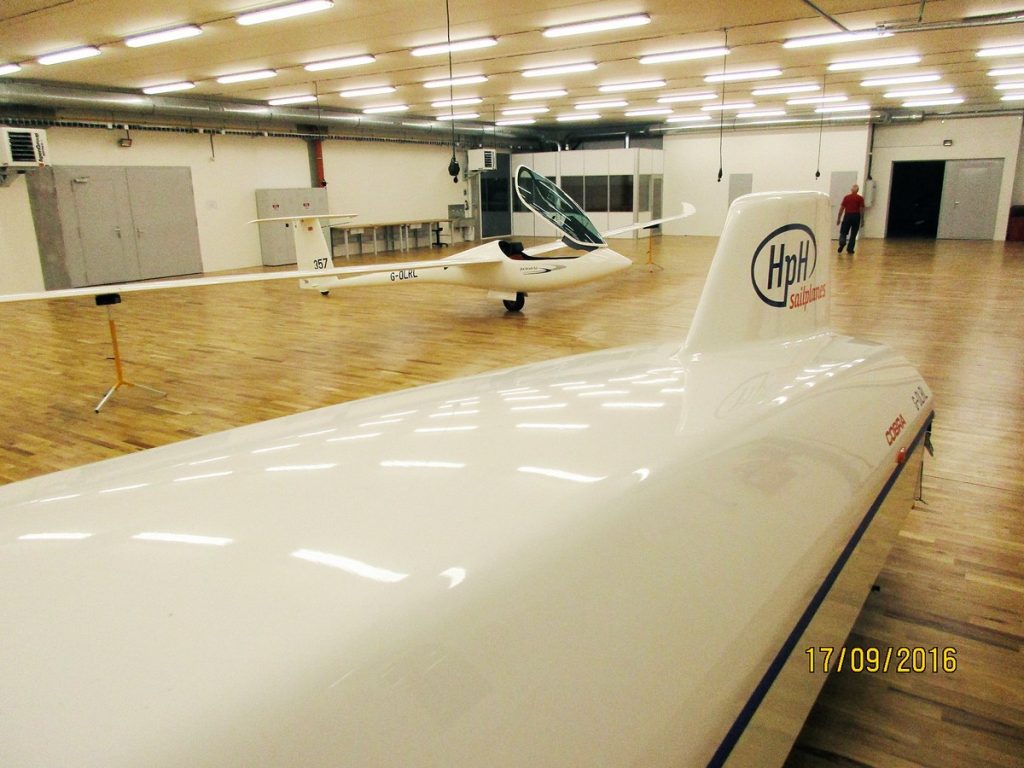
Workshop is not the right word – it is an over thirty meters long and almost twenty meters wide hall. At that time, Jiři was repairing several gliders in the workshop: my EoN Olympia 2b and two Czech Orlik gliders. In addition, there is a trailer from Olimpia in the hall, the already renewed wings of our Slingsby Tandem Tutor, another Orlik, which is waiting for renewal, and a few more wings and fuselages.
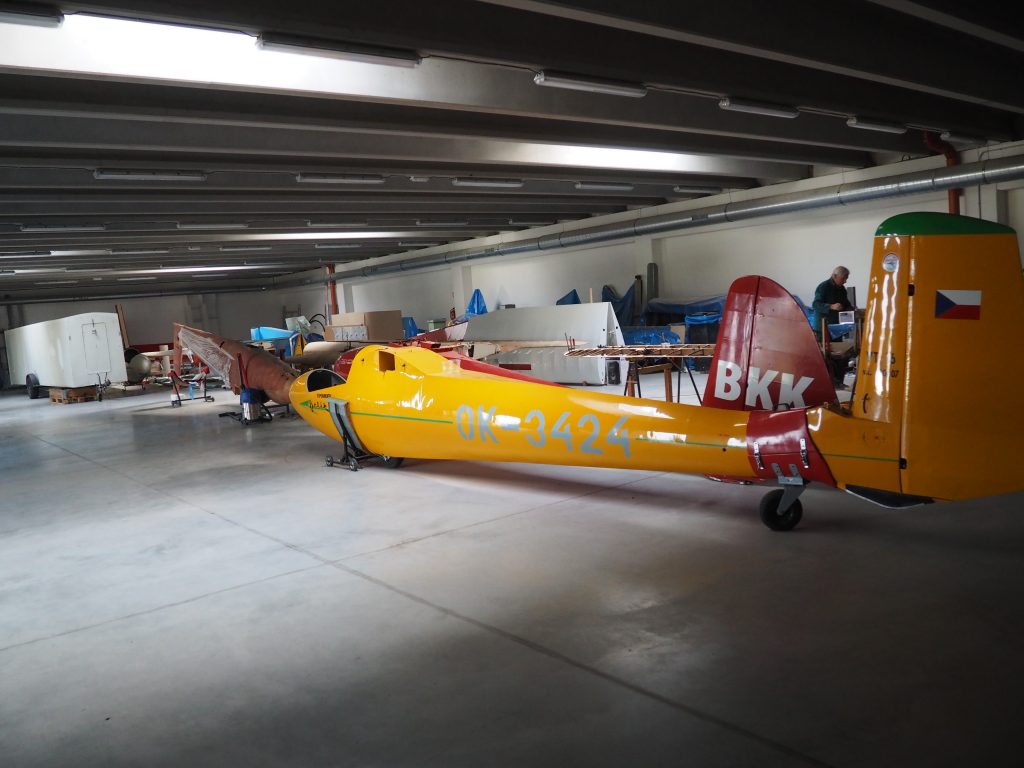
In the second building there is also a small workshop that mainly serves as a paint shop. In that paint shop, we started the second semester of our historic wooden gliders renovations school. The world-famous builder Jiři was the teacher since the first classes. The students were: Nikolaj, Klemen and Boris. We went with Čavka to the Czech Republic, having no idea what was coming. The first words of our teacher Jiři, when he saw Čavka, were: “The age of this bird requires great respect. We are not going to renovate it, just so that it can fly. We will do it so that we can proudly show it all over the world.”
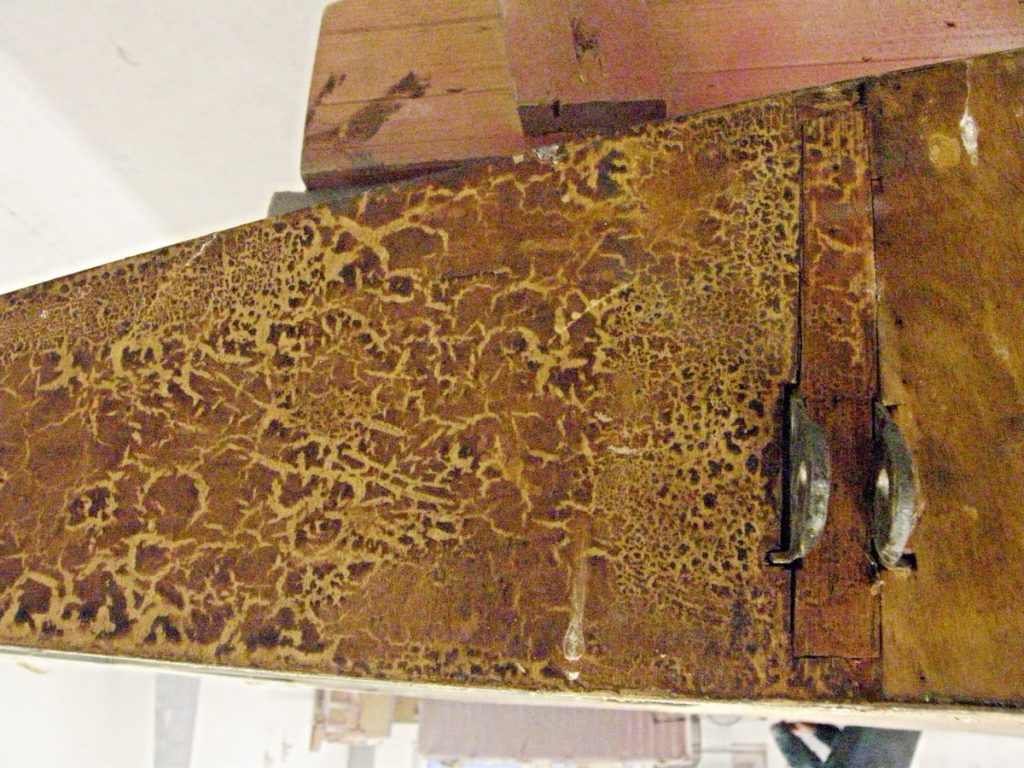
We worked all week from morning to evening. We would only go to town for lunch. In five days we removed the fabric and all the old paint from Čavka. A miracle appeared under the paint. Imagine the feelings of a man who found an abandoned and long forgotten Stradivarius violin in an attic. This is what happened to us. The plywood, especially on the underside of the wing, resembled a new violin. Something similar could happen once in 100 years, throughout the universe!
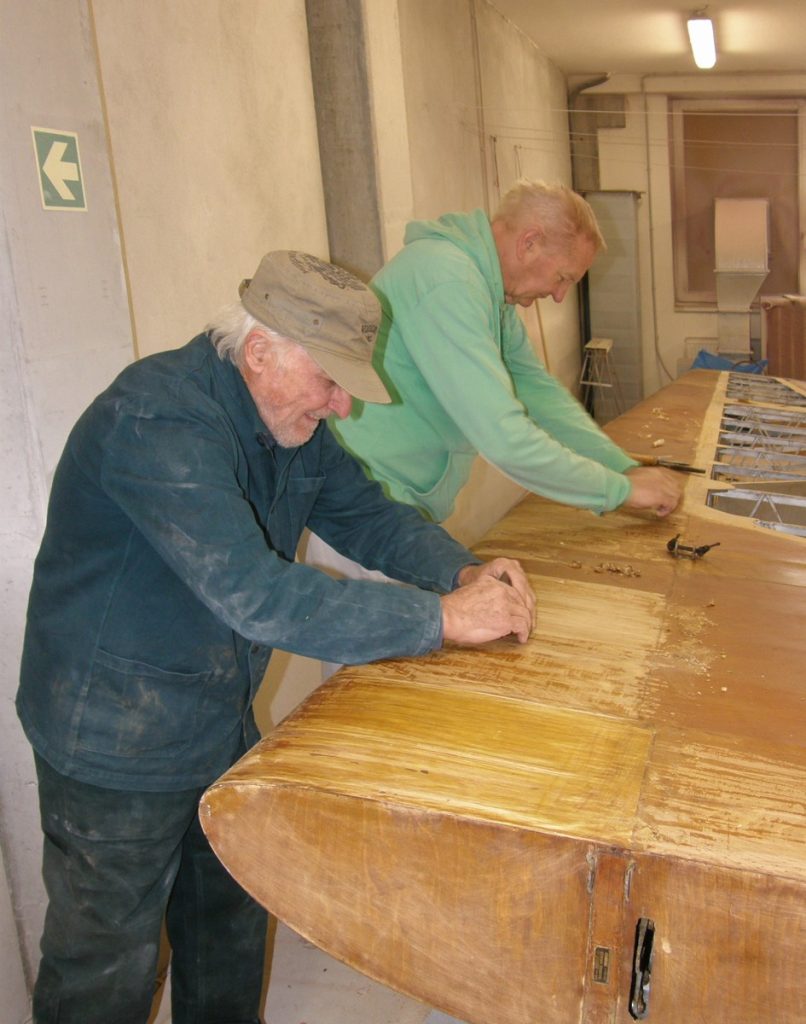
Jiři, who had seen almost everything in aviation, was amazed at the careful workmanship of the glider made by Letov in Ljubljana. When he saw it, he ran amok! The work in our school so far was based on the fact that the teacher would show us something practical, and then only occasionally monitor the progress of work. And here suddenly our teacher gave up all other classes and worked with us as if he, too, was a student of an even higher master. Then we went home, tired but happy and glad.
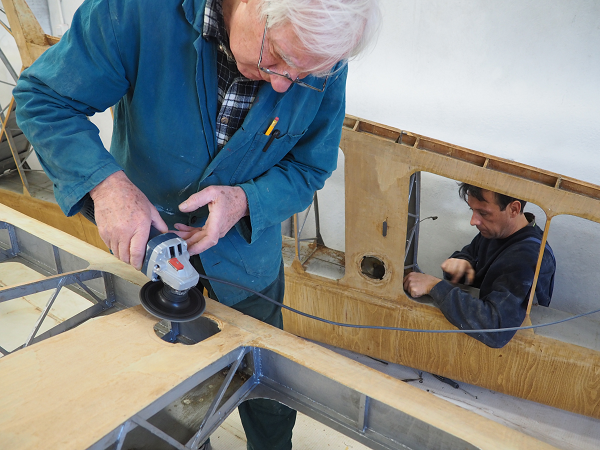
At the beginning of February 2020, we returned to continue the school and rebuild Čavka. During this stay, Čavka received new fabric on the wings and rudders.
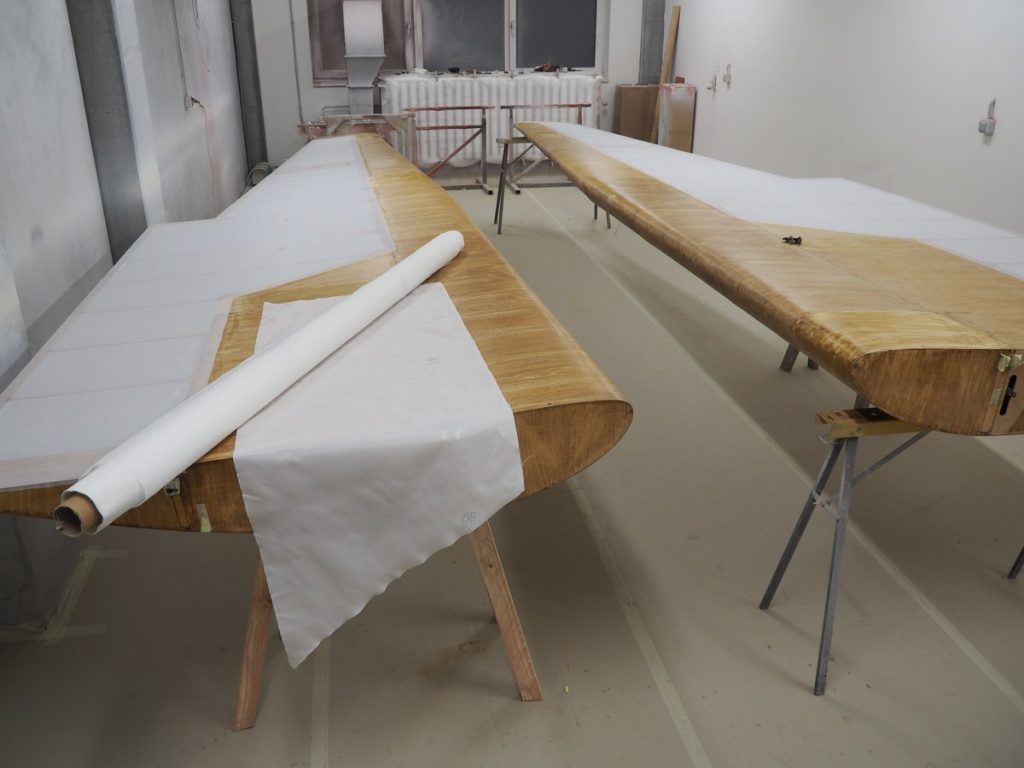
We mastered the technique of covering the wings with fabric in the previous semester, so we did a significant part of the work ourselves, of course under the supervision of the teacher.
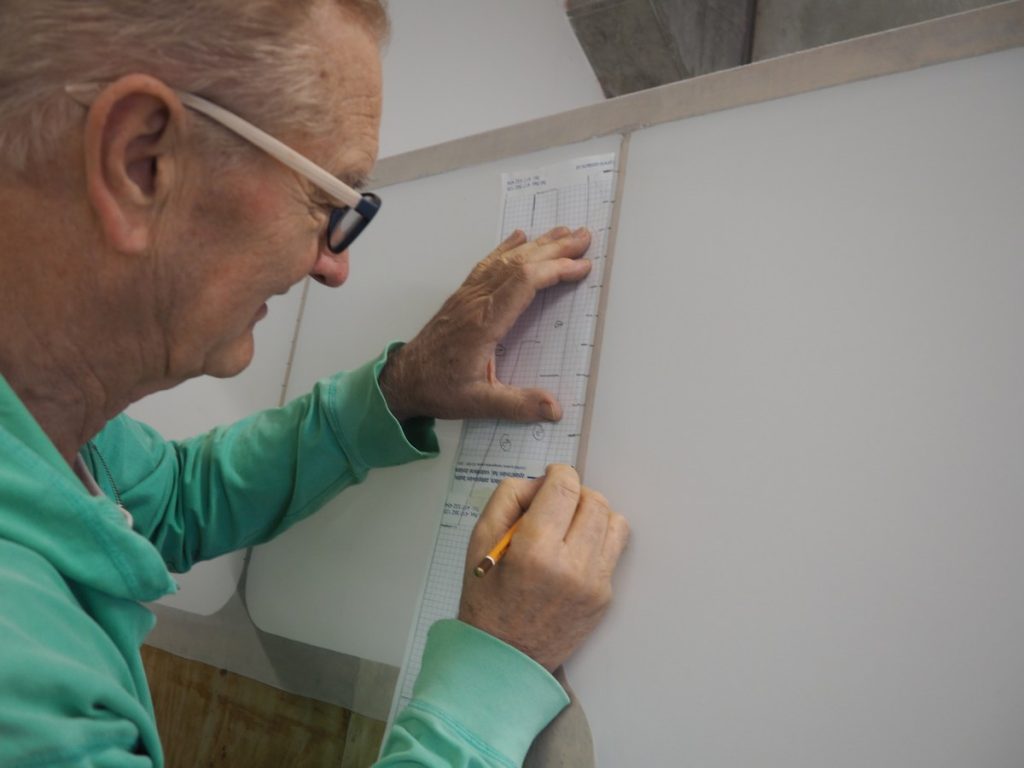
New pilot Alojz Kelc from the Ptuj gliding club – the family club of Čavka joined our team. It turned out that his skills were very useful to us.
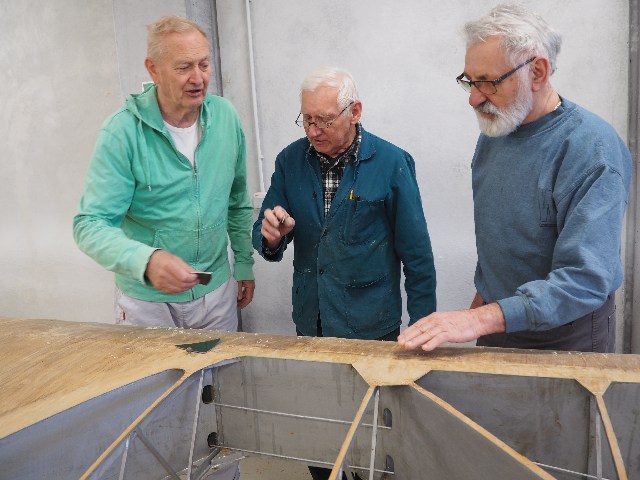
The following story is related to him. For almost ten years Alojz tried to buy the same Čavka from his club. However, he failed in this attempt. Perhaps he was not decided enough or did not want to be “tiring” for the club. Without knowing it, we offered the Ptuj gliding club a specific price and the club immediately decided to make the transaction. Alojz’s disappointment was evident: he as a member of the club was not given a chance, and suddenly some pilots from the capital come and Čavka is gone. We expected jealousy and bad wishes. It often happens that an abandoned historic glider stands in a corner or in the attic of a hangar for many years and no one is interested in it. The moment someone wants to pick up and restore this forgotten glider, suddenly many other people “recall” that they had been going to do exactly the same for a long time. In the case of Alojz it was quite the opposite. When Alojz saw the partially restored Čavka, he joined the works with great enthusiasm. He admitted that he was afraid of what hands Čavka would fall into. But when he saw the first changes, he realized that Čavka was in luck. Also our friend instructor Roman Kiełpikowski came from Poland to help with the reconstruction.
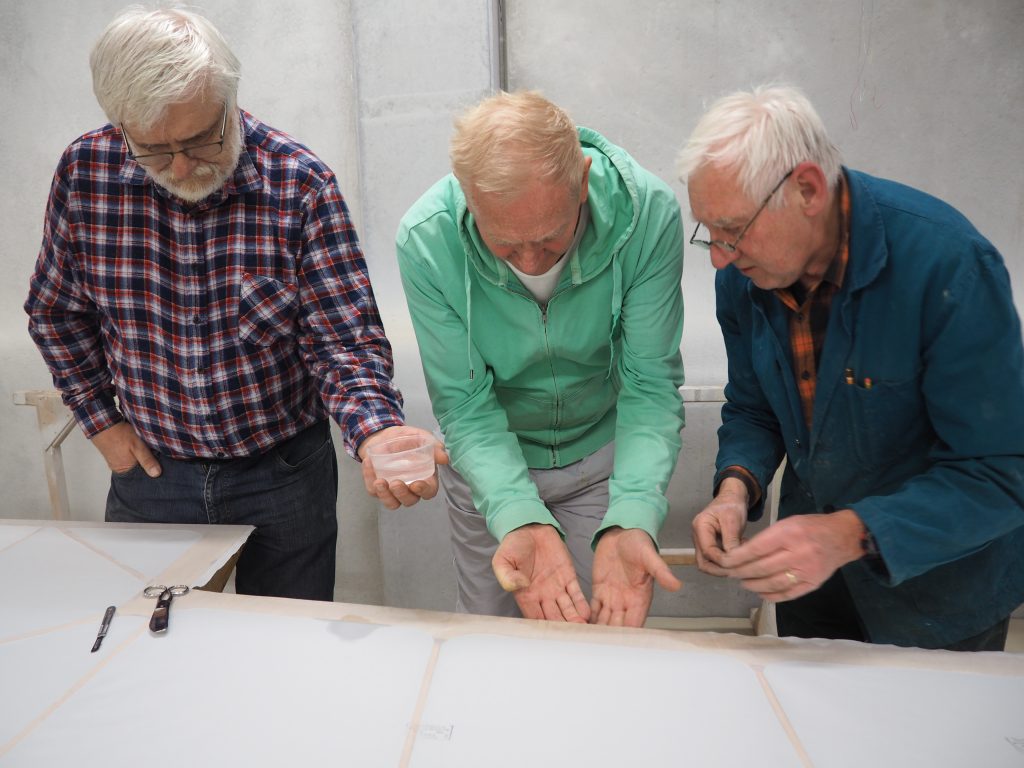
Our efforts were unexpectedly interrupted by the virus in March 2020. The travels between Slovenia and the Czech Republic have ended. Big plans suddenly flew into the unknown. And then Jiři took over the helm of the entire project. He chose a new assistent – Jakub Potměšil and thus Čavka was not abandoned, for the second time. Due to the lack of documentation, Jiři commissioned new strength and center of gravity calculations. So, work on the glider continued throughout the fall and winter between 2020 and 2021. Jiři and Jakub finished the renovation themselves.
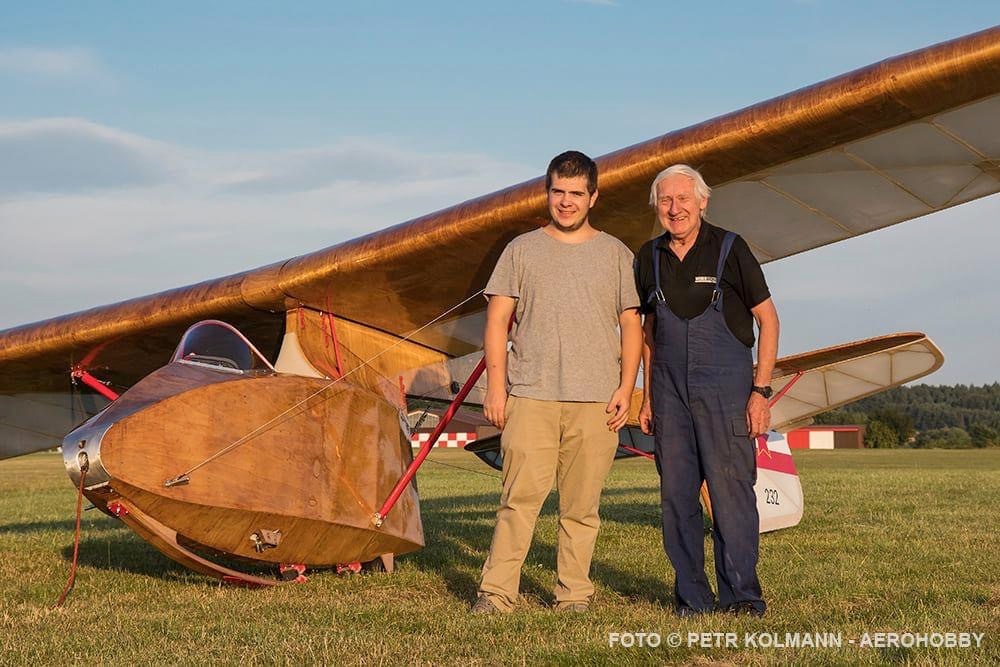
At the HpH factory, the metal parts of Čavka were renovated and all steel cables were replaced. The glider has been repainted and now it has a slightly tinted natural wood color. The Zlin 24 Krajanek glider, on which we have set record altitudes in car launch at the airport in Biała Podlaska, has also the same color.
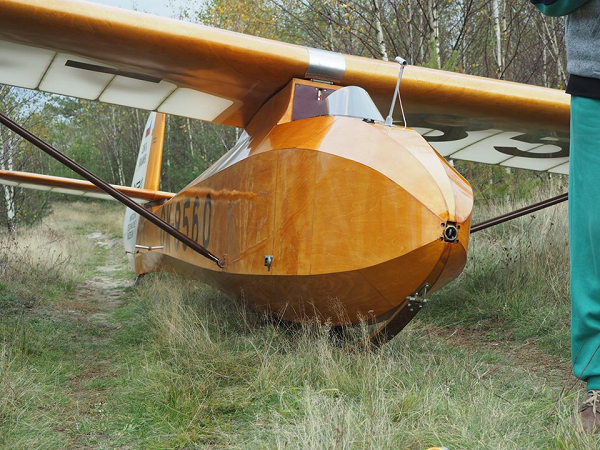
Zlin is also painted with a colorless varnish, but it should be added that Krajanek was made completely from scratch. Our Čavka has not as uniform color as Krajanek. Čavka has some old and some new patches on its wings. As a pre-war veteran, she will show them with pride and boast: “I have taught over a hundred students to fly and I have survived all their mistakes.”
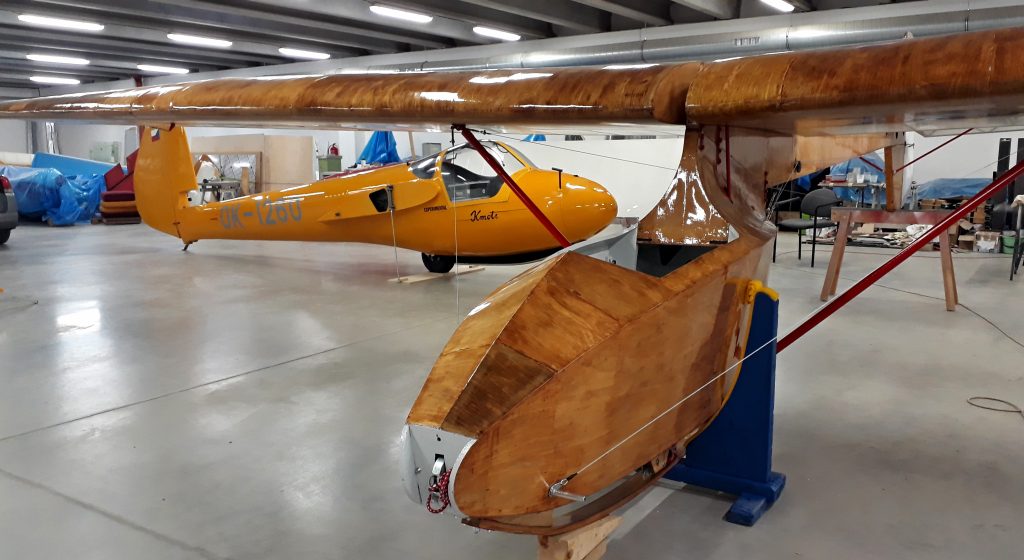
The works were completed in early July 2021. The annual technical inspection was performed at the end of July and on August 1, Čavka received a new registration mark OK-AKT 01 and an airworthiness certificate.
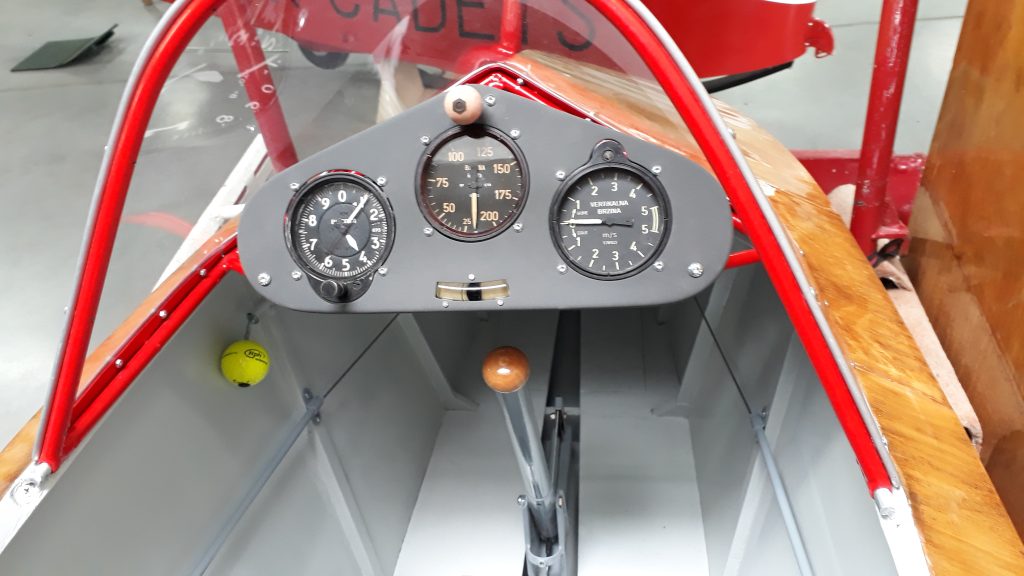
The first test flights took place more than half a century later, at Podhořany airfield on August 11, 2021.

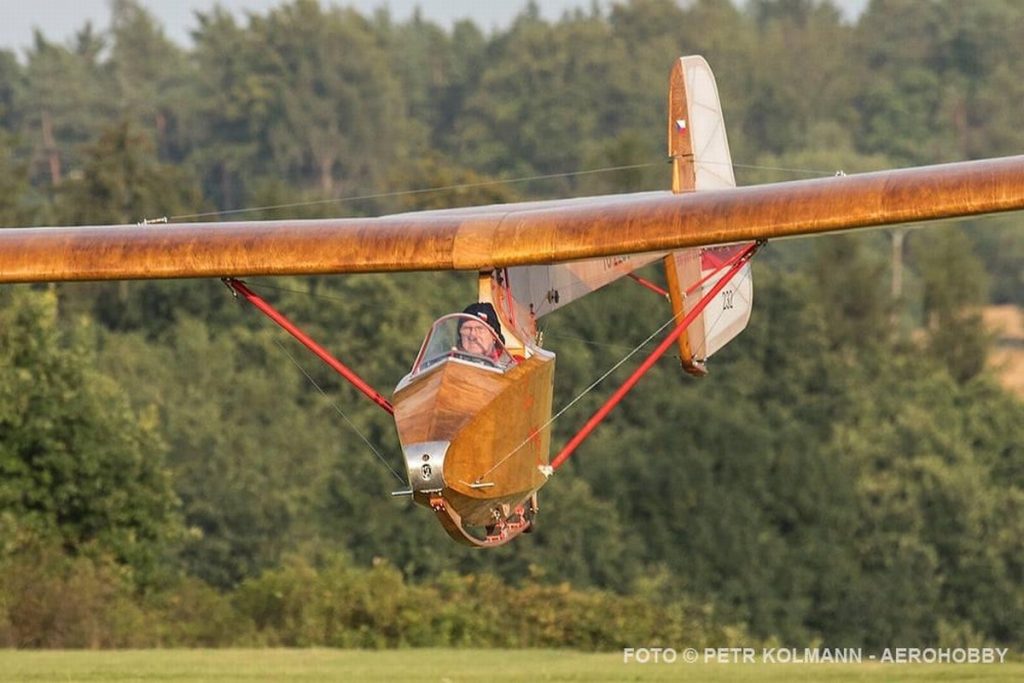
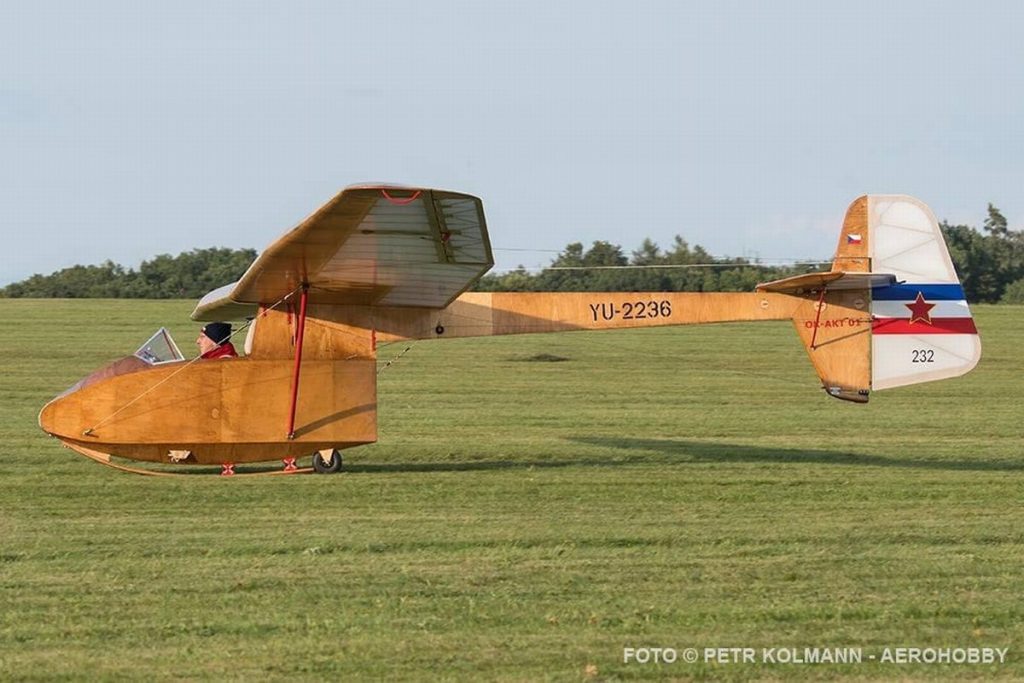
At the end of August, Čavka was presented to the aviation audience at the annual rally of POTK the Czech club of historic gliders lovers at the Jesenik airfield.
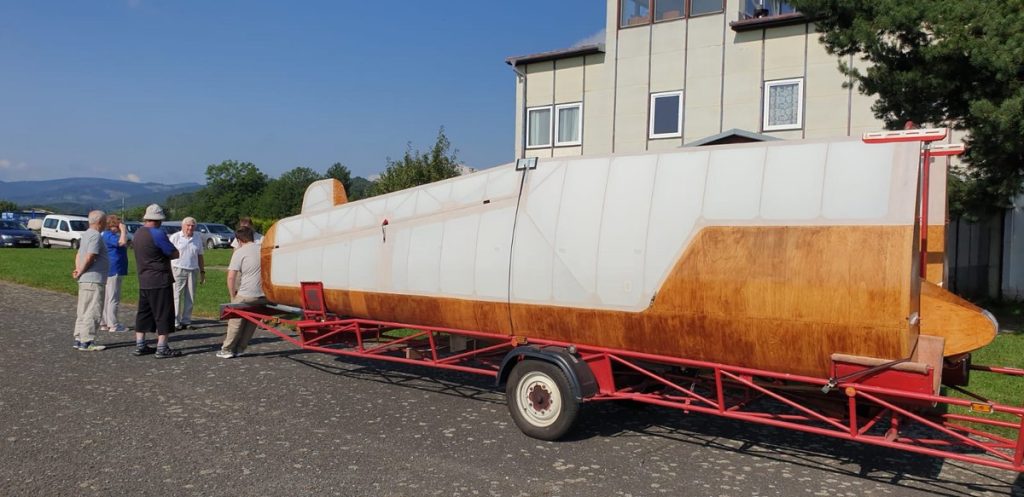
It turned out that the center of gravity of the sailplane was not within the calculated limits. For this reason, we made only two flights and the pilot was Jiři, who weighs only about 70 kg.
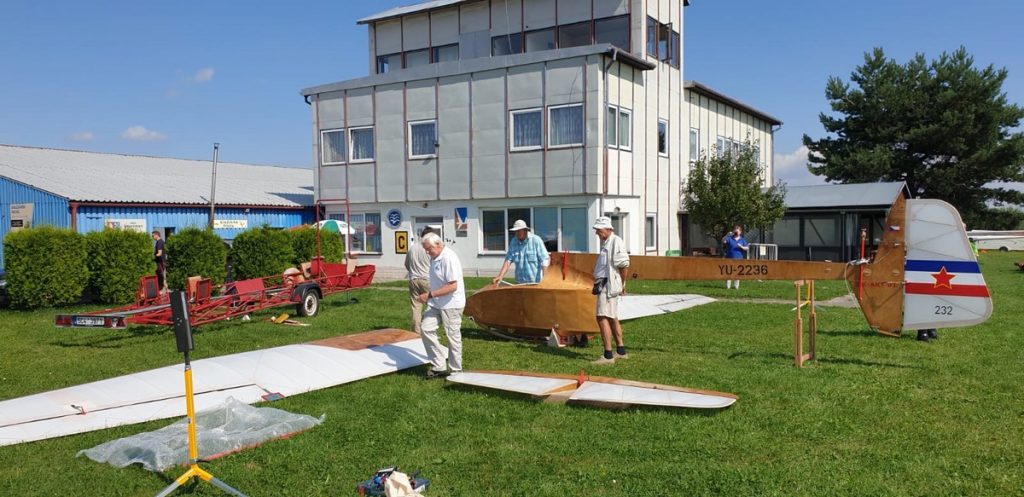
Even so, the glider was “heavy on the nose”. One flight was made in tow behind a plane and the other one in tow behind a car.
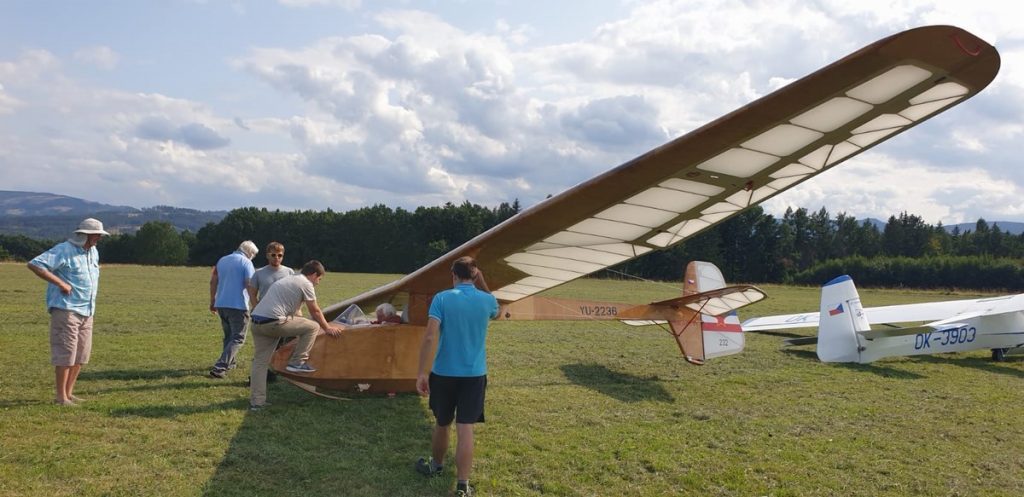
Due to the wrong position of the center of gravity, pilot Jiři was not particularly happy with the flights.

Two weeks after the rally, Jiři solved this problem as well.
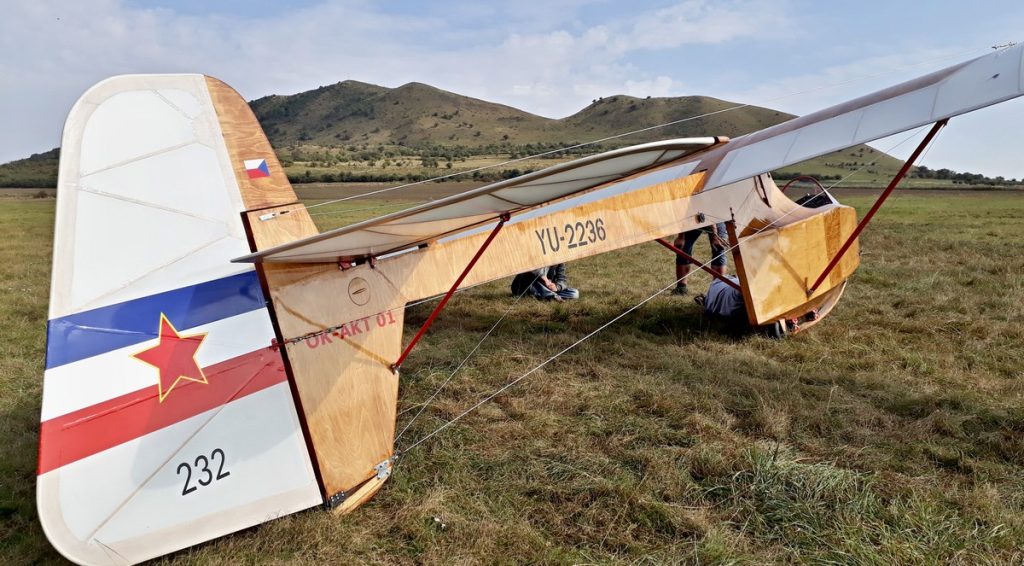
At the second annual event of POTK club – the ceremonial ending of the vintage glider flying season at Rana airfield – at the end of September 2021, Čavka stayed in the air for almost seven hours in 11 flights.
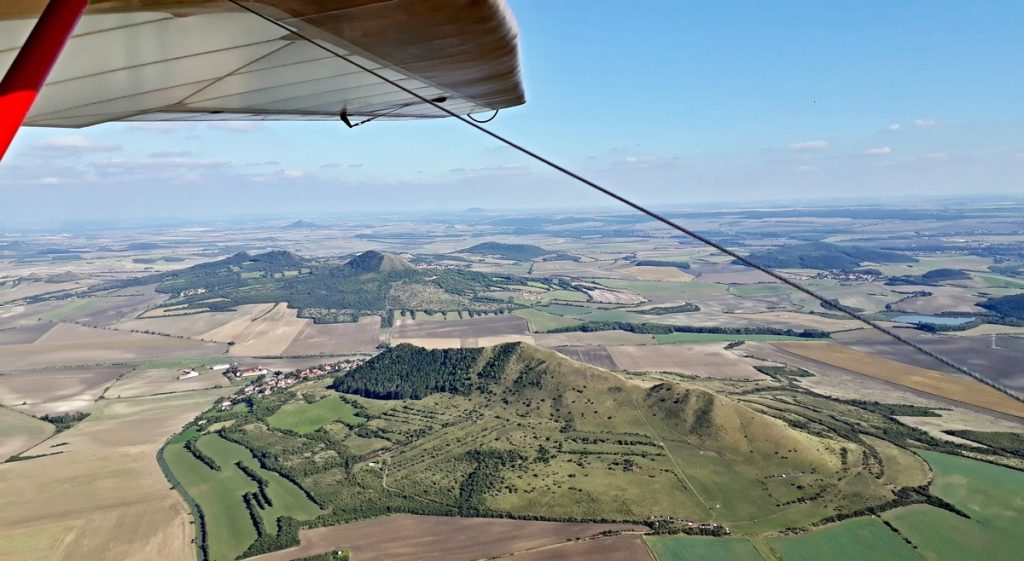
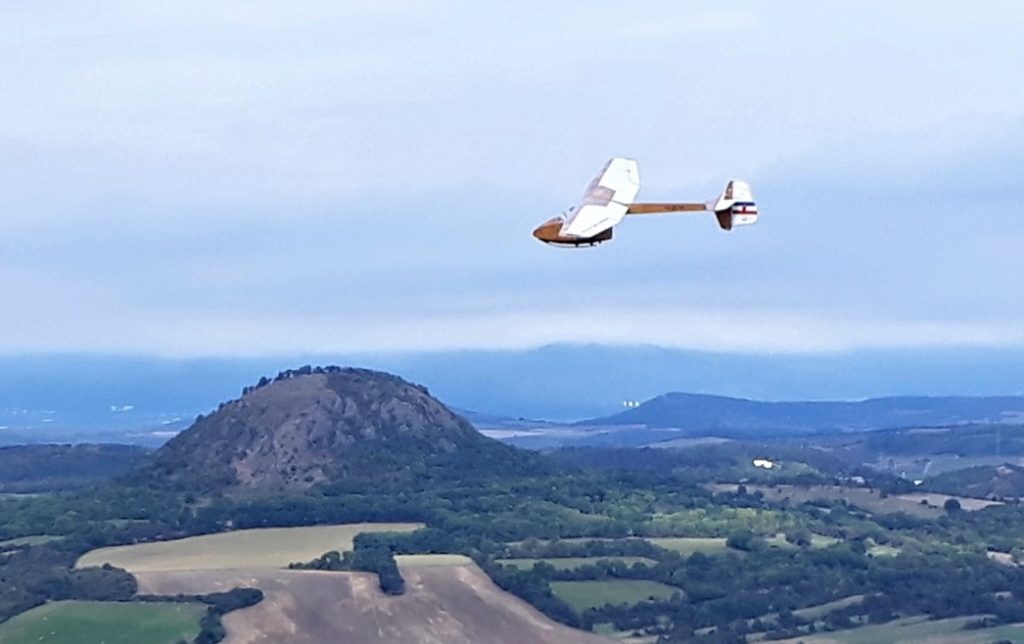
And finally, about “who” Čavka actually is? It is the younger sister of the Polish Salamander glider from 1936. With the Polish pilot Roman Kiełpikowski, we organize a rally of lovers of vintage gliders every year. It takes place alternately – once at the Sinj airfield in Croatia and once in Poland. We have been waiting for ten years for the famous Polish pre-war Salamandra glider. Before each season, Roman would promise with hope: “maybe this year …”. Finally, in 2020, it happened at the Żar airfield. Finally, we lived to see that famous Polish pilot Witek Nowak brought his Salamandra. We hope that in July 2022 Čavka and Salamandra will meet at Sinj airfield.
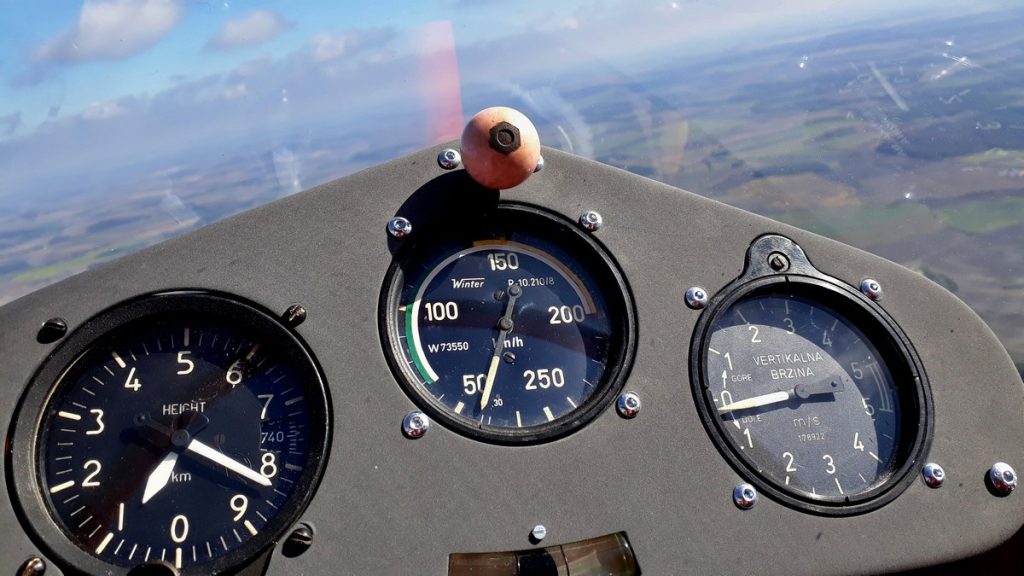
In the second half of the thirties of the last century, gliding became very popular in Yugoslavia. Along with this, a problem of training pilots, caused by the lack of training gliders appeared. That is why the famous designer Ivan Šoštarić constructed the Čavka glider in 1939, which could take off with an airplane or a winch. He pattern it upon Salamandra in its construction.
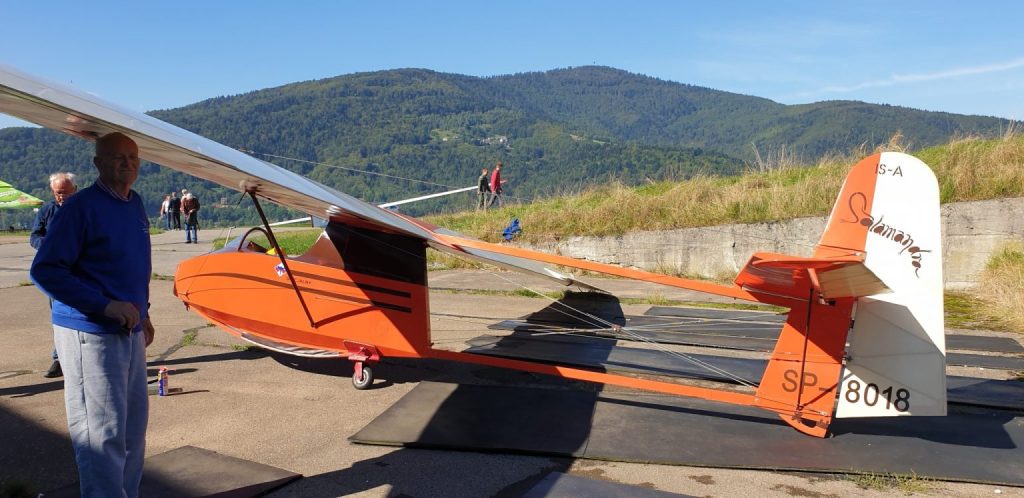
The wings, tails and cockpit are almost identical to those of the Salamandra. Apart from some smaller changes, Čavka is the visually and aerodynamically younger sister of Salamandra.

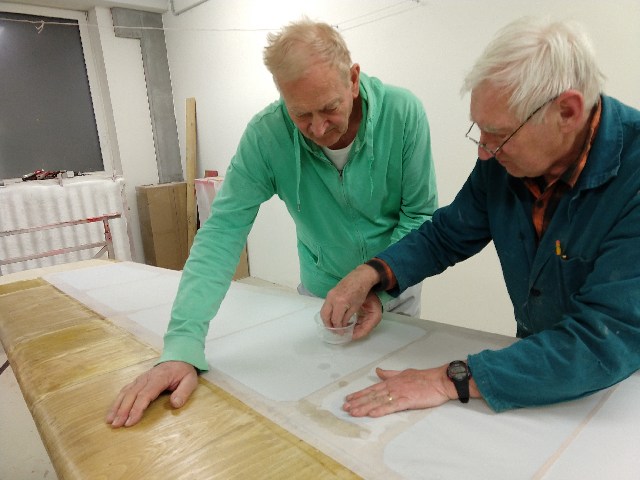

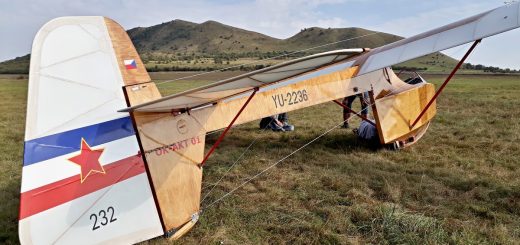
Nedavni komentarji